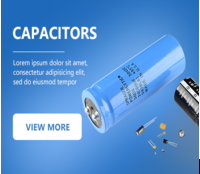Do you know capacitance on the ATX power supply?
There are two main capacitors on the ATX power supply (and, of course, some other materials have a smaller number of capacitors): ceramic capacitors with smaller volume and capacity, and electrolytic capacitors with slightly larger volume or capacity.
Of all the electrolytic capacitors, one or two electrolytic capacitors on the high voltage side are the most easily noticed (because of their large size). The second is a number of dense electrolytic capacitors on the low voltage side (close to the output cable).
The capacitors of other materials and colors are scattered in the peak absorption, EMI filtering and the peripheral circuits of the chip.
Any function of capacitance in the circuit is premised on its ability to store charge. Therefore, if capacitors lose the ability to store charges (this book is referred to as "loss of capacity"), it means that capacitors lose their due role in the circuit protection. In practice, some capacitors may lose only part of the ability to store charges (this book is referred to as "partial capacitance" for short). Partial capacitance loss is the most common failure of electrolytic capacitors; some capacitors may also completely lose the ability to store charge (this book is referred to as "complete capacitance"), at this time the capacitance can be regarded as an internal open circuit: some capacitors may also (completely) break through the short circuit. In short, the fault capacitance can only be expressed in the form of partial capacitance, complete capacitance and short circuit.
However, many parts of the capacitance will not be bulged, and there is no significant difference between the capacitance and the normal capacitance, which increases the difficulty and workload of maintenance and inspection.
The actual capacitance corresponds to a certain level of manufacturing accuracy. Proficiency levels are usually marked in alphabetical form in their surface models: d is + 0.5%, F is + 1%, G is + 2%, J is + 5%, K is + 10%, M is + 20%. In general, the larger the capacity, the greater the range of allowable deviation from the nominal value.
If you want to know more, our website has product specifications for capacitor, you can go to ALLICDATA ELECTRONICS LIMITED to get more information


